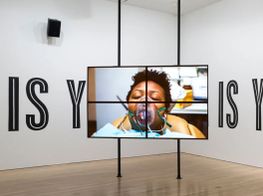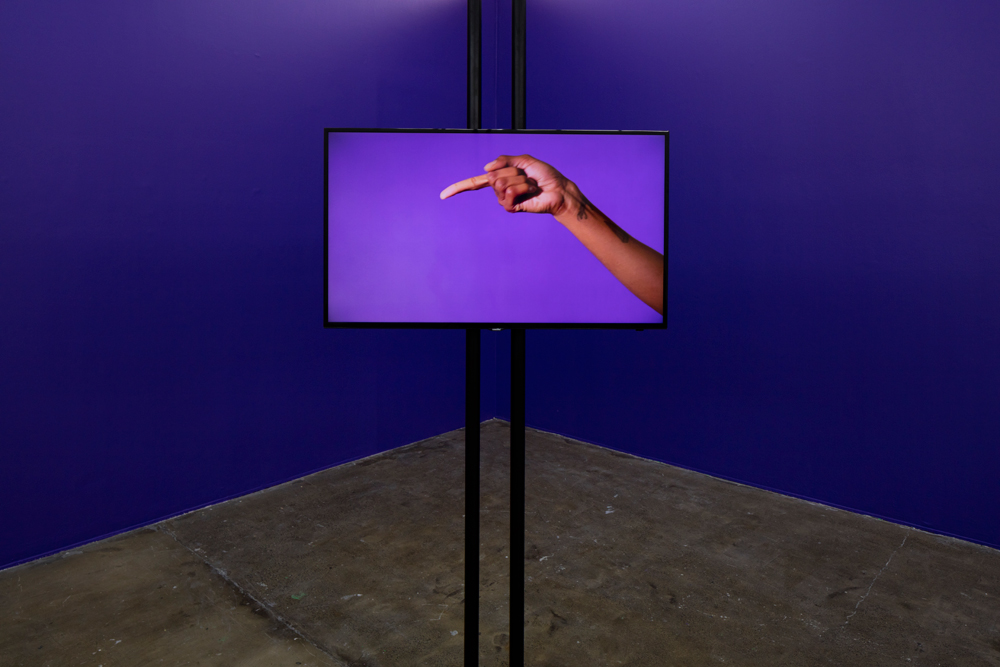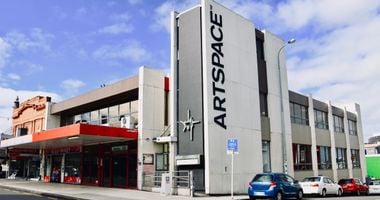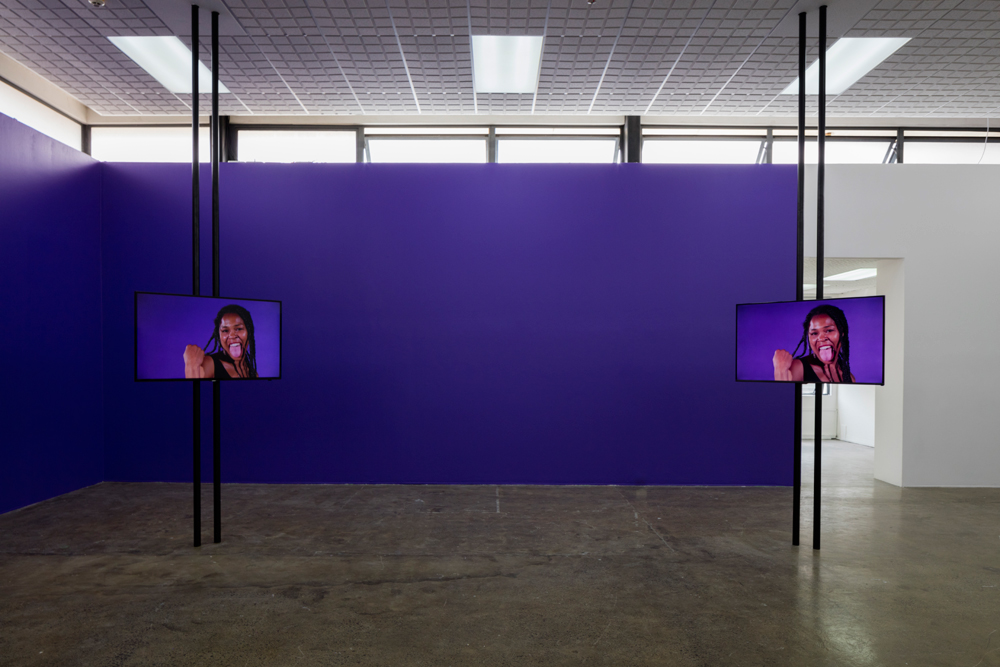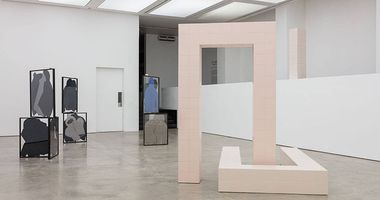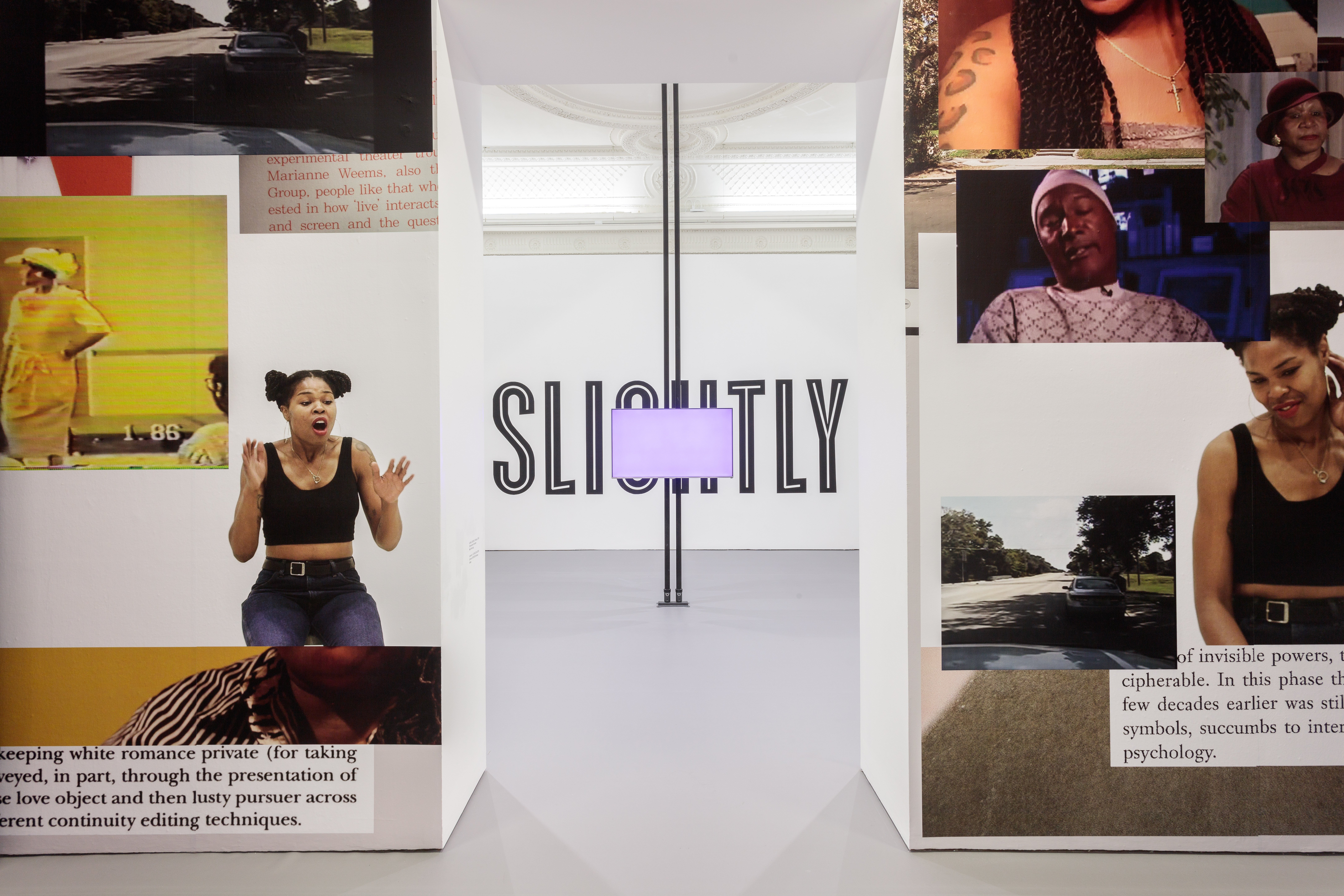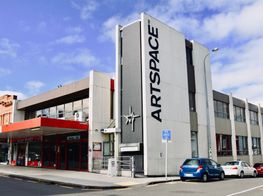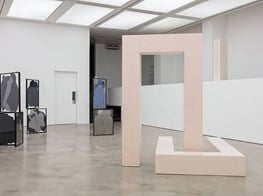Martine Syms
Martine Syms. Photo: Christopher Horne. Courtesy the artist.
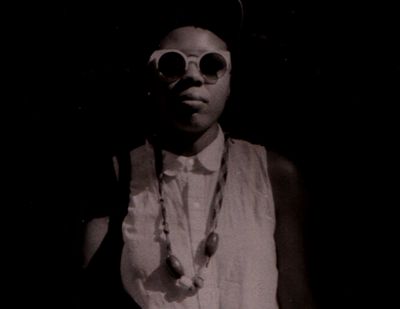
Martine Syms. Photo: Christopher Horne. Courtesy the artist.
Martine Syms is a Los Angeles-based artist who is gaining critical attention for works that explore the relationship between black creative cultures and contemporary digital media.
She opened her solo exhibition Fact & Trouble at London's Institute of Contemporary Arts in April 2016, and is currently showing in group exhibitions across the globe, including Public, Private, Secret (23 June–8 January 2017) at the ICP Museum, New York; Los Angeles–A Fiction (22 September–22 January 2017) at Astrup Fearnley Museet, Oslo; and Potentially Yours, The Coming Community (10 November–22 December 2016) at Artspace, Auckland.
Ocula talked with Syms about her practice, focusing on her recent video work Notes on Gesture (2015), which was shown as part of the Artspace exhibition, and addresses the viral circulation of images of African-American women in television and online media.
KBCI am interested in the way you refer to yourself as a 'conceptual entrepreneur' rather than 'artist'. How is this term a better fit for you?
MSAfter I left art school, I was much more interested in creating structures for myself and other artists to have a sustainable practice. I was really influenced by the way that people ran record labels or bookshops. When I first graduated, I was definitely not making the kind of art that my school was prioritising, so 'artist' didn't feel like the right term to me. I actually started a bookshop as a project space right out of school. In one sense, it was just a business, but I'm interested in having different kinds of platforms for creative output.
KBCCan you tell me about your video work Notes on Gesture (2015), currently showing at Artspace? Its title refers to Giorgio Agamben's 1992 essay of the same name that discusses 'gesture' as a central feature of cinema, but the work also draws on an earlier and much more obscure text on body language.
MSYes, a 17th-century book by John Bulwer called Chirologia: Natural Language of the Hand. I found it when I was looking at different acting techniques. I was thinking about how much everyone is recorded in their everyday lives, and how this might relate to an actor cheating or blocking a scene, so I tried to make an index similar to that found in Bulwer's Chirologia. The Bulwer text is concerned with gestures in Shakespearean theatre and I noticed similarities between these and emojis. Some of the symbols are exactly the same–like the 'prayer hands' and the 'raised hands' emoji. When I was working with the actor in this video, I was thinking about how we learn the way that we move in life and what influences these things, from pop culture to family references. There is this interesting relationship between 'authentic' versus 'performed' movement.
KBCAnd these gestures are looped in Notes on Gesture so that they appear like repetitive GIFs.
MSI'm interested in GIFs or Vines because of the way they circulate the behaviours of black people right now. I am sad about Vine being shut down, because it was such a resource and source of inspiration for me. It was really amazing seeing these teenagers making artwork with very limited means—writing and telling stories with such proficiency and economy. I am most interested in how they're choosing to represent themselves and narrativise their experiences. There are certain cinematography styles that are pioneered to do that and then these are circulated widely online and re-incorporated back into bigger film-production models. This cycle is really interesting. Once it's in a big movie, another teen sees it, picks it up and then it morphs again. The problem for me might be that when this influential style gets copied, it is not really thought of as being part of black aesthetics or a black tradition.
KBCDoes this relate to your interest in Afrofuturism? You recently made a documentary piece The Mundane Afrofuturist Manifesto (2015) that looks at how this artistic or aesthetic movement emerged in the 1970s. This included conversations with contemporary artists who are similarly interested in futuristically 'reimagining' black experiences. What is your own relationship to the movement?
MSI wouldn't call myself an 'Afrofuturist', as other artists do, but my methodology is tied to Afrofuturism in terms of taking things from the past or using technology to fill in information that's not available in the official archive. I use speculation as a technique to imagine what could happen. Even my use of the term 'entrepreneur' is about speculating with value—about asserting a new value, or different ideas around what could be valued.
The Artspace work [Notes on Gesture] is concerned with the image of black women and how these images have acquired greater value through their circulation and in the media as GIFs and on American TV shows. While I was making this piece, all the 'September issues' of the major Western fashion and lifestyle magazines happened to have black women on their covers. This was the first time that these magazines had simultaneously promoted black women on their covers and there were a whole lot of news stories patting each other on the back for having done this. People were making a bigger deal of it than I thought it deserved. I started thinking a lot about what cultural circumstances had changed to the point where these white magazines were interested in featuring black women—what was it about them that became valuable in the course of a year?
KBCThe colour purple is really prominent in your work. Can you talk about how it functions?
MSYes, purple is a frequent colour motif for me. Initially, I started using it as shorthand for thinking about the black feminist tradition. The phrase 'The Colour Purple' obviously references the book by Alice Walker, but also the Steven Spielberg movie. I was particularly interested in the way Spielberg benefited the most from that movie—something that was an important point of investigation for me. I used to use purple like an Yves Klein blue, but now I realise that it functions more like a 'white'. I use it as a kind of baseline, like the way white is supposed to be a neutral or 'non-colour'.
KBCThis baseline purple is both the 'green screen' for the video Notes on Gesture but also the colour of the walls in its Artspace installation. The work Lessons (2014) in your recent ICA exhibition also established a similar spatial dialogue between a video screen installed in the middle of the gallery and the wall behind it. This spatial dynamic actually reminds me of high-end fashion or so-called 'concept' stores. Is this something that interests you?
MSCommercial aesthetics that use glass and coloured light; those kinds of presentation methods are definitely an influence, for sure. I'm also concerned with how to make the video installation more sculptural and architectural. The Artspace installation forms a circular space that you [the viewer] are positioned within. The four-channel audio also works with this—it should sound different depending on where you're standing within that space. This also involves film narratives, including how a story unfolds spatially while still being committed to a two-dimensional flat screen.
KBCI can't end this interview without asking you about the recent election of Donald Trump. How has your own art community responded to Trump's rise to power in the US?
MSI was talking to people a lot in the week after he was elected who were saying 'I didn't realise things were this bad' and 'I've never felt this hated'. While I totally understand that those are valid feelings, it was not the first time I had felt hated. It was not the first time I had felt unwanted somewhere. In many ways, it was confirmation of a lot of things I had been feeling already.
There has been this Twitter conversation about how most people learnt about the history of Japanese internment in the US through the memoir Farewell to Manzanar by Jeanne Wakatsuki Houston in high-school English class. So I've been thinking about how literature and art does this heavy lifting, historically and politically. I find that not hopeful—I can't call it 'hope'—but something I feel compelled to do.
My hope is that [Trump's election] actually radicalises people and that art returns to being a place of non-normative ideas. Many art collectors and people on the boards of museums are Trump supporters. For the past decade or so, the art world has felt increasingly conservative, racist, homophobic and misogynistic, in my professional experience. There are a lot of affirming spaces that I feel excited to be a part of, but then there are institutional spaces that I don't feel that way about. So, I hope that this might encourage people not to be so concerned with the institutional 'stamp', because it can be a really hostile space. —[O]

